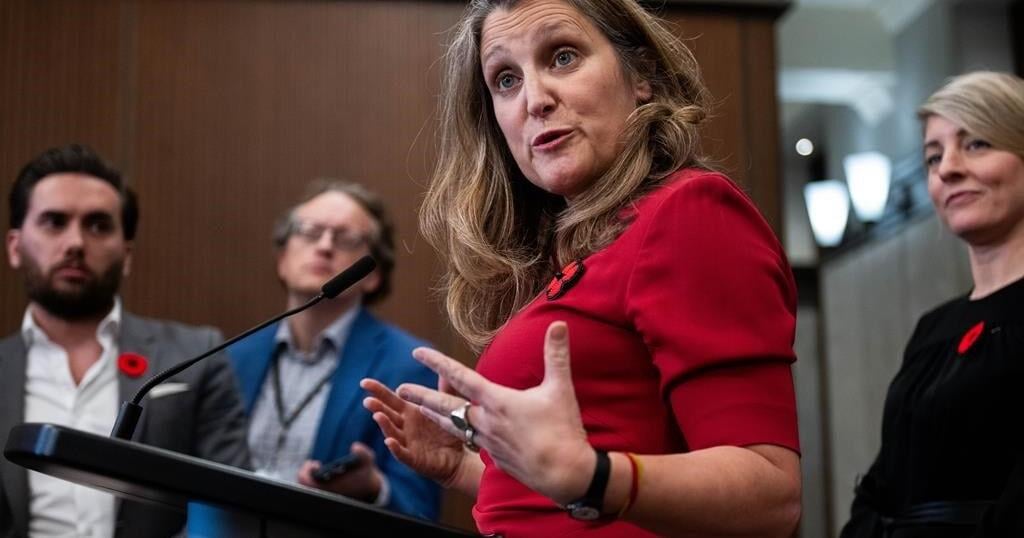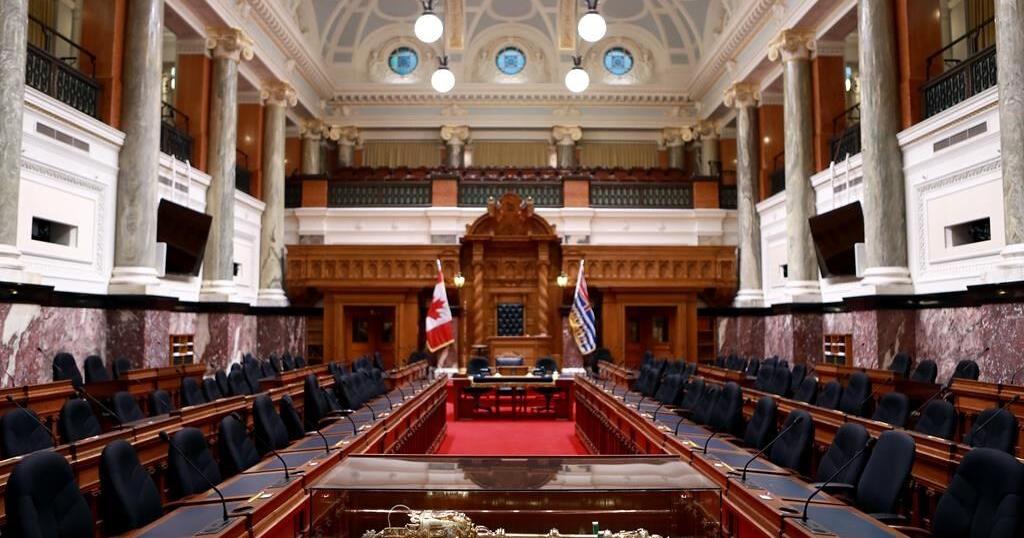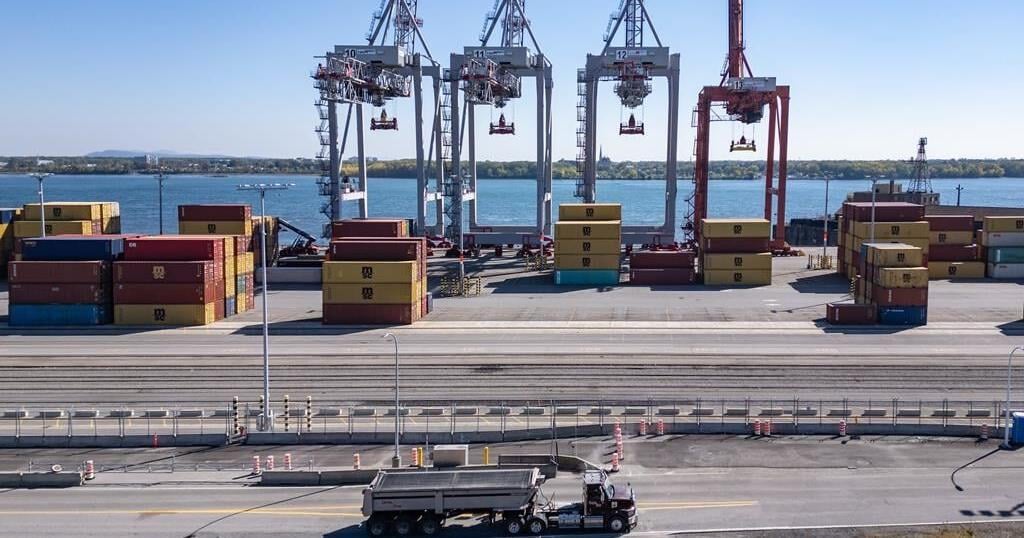While the Canadian government and military usually don’t respond to reports of unidentified flying objects, there have been some recent exceptions, including cases where CF-18 fighter jets were scrambled.
This week, the U.S. intelligence community is set to release a new report on unidentified aerial phenomena, or UAP, the term American officials use for what are more commonly known as unidentified flying objects and UFOs. In the U.S., both the Pentagon and NASA are currently researching the topic.
For its part, the Canadian military routinely states that it does “not typically investigate sightings of unknown or unexplained phenomena outside the context of investigating credible threats, potential threats, or potential distress in the case of search and rescue.”
- To learn more about the June 2021 UAP report from the U.S. Office of the Director of National Intelligence, click here.
Neither does Canada’s transportation department, which operates an online aviation incident database that’s peppered with nearly three decades of unusual reports from soldiers, police officers, air traffic controllers, and pilots on military, medical, cargo and passenger flights operated by WestJet, Air Canada Express, Porter Airlines, Delta and more. In most cases, there is little to no follow-up.
“Reports received by Transport Canada are assessed for any immediate risk to aviation safety and security or to the Canadian public,” a Transport Canada spokesperson previously told CTVNews.ca. “Reports of unidentified objects can rarely be followed up on as they are as the title implies, unidentified.”
Based on the results of eight access to information requests filed with three federal agencies, these are some of the exceptions: the unknown threat, distress and safety cases the Canadian military and government responded to. All reports come from 2016 to 2020, and all supporting documents have been included below as a downloadable PDF.
‘EVASIVE ACTION’ – DEC. 22, 2016
An American Airlines flight from London to New York was more than 300 kilometres south of Goose Bay, Labrador on the night of Dec. 22, 2016 when it reported “a possible aircraft off its left side and below,” according to a publicly available Transport Canada report.
“Air Traffic Control (ATC) and North American Aerospace Defence Command (NORAD) did not observe any radar data to confirm,” the report continued, referring to the joint Canada-U.S. continental defence group. “Two other aircraft reported a possible target.”
Once classified “Secret,” digital logbook entries from the Royal Canadian Air Force (RCAF) provide more details. They describe the American Airlines flight taking “evasive action” when an unknown aircraft appeared “off his left side.” With “inconclusive” radar data, Canadian CF-18 fighter jets were scrambled to investigate what was dubbed “TOI #2,” or “Track of Interest 2.”
Air force personnel meanwhile instructed the American Airlines flight to “turn 90 degrees right to separate data trail from other aircraft,” since two or more aerial objects can appear as a single radar blip if too close together. The pilot complied, “and only a single radar hit was detected behind him.” When the American Airlines plane returned to its original flight plan, the crew “reported seeing an aircraft with a rotating white light on his left side and behind him.”
They weren’t the only ones. Not far away, near the Gulf of St. Lawrence, a Lufthansa flight soon “saw something slightly below them to the left” while a Swiss flight “saw white light and rotating beacon.” Boston air traffic controllers “informed all [aircraft] in the area to look for unusual activity.”
Pilots in Canadian fighter jets, however, were unable to locate the “track of interest” and returned to their home base in Bagotville, Que., after about an hour-and-a-half in the air.
‘UNKNOWN TRACK’ – NOV. 21, 2018
CF-18s from Bagotville, Que., also investigated an “unknown track” detected steadily heading towards North America from the direction of Greenland on the morning of Nov. 21, 2018, before it “faded in an area of weak radar coverage.”
A declassified and formerly “Secret” NORAD report from the following day says there was “nothing seen” by the fighter jets, and that the unknown track was ultimately “deemed spurious data” caused by issues at a remote NORAD radar installation on the north Atlantic coast in Labrador.
‘SEEN ENTERING THE WATER’ – SEPT. 3, 2018
Documents obtained from the RCAF’s 413 Transport and Rescue Squadron in Nova Scotia describe a Cormorant search and rescue helicopter being dispatched to the north shore of Prince Edward Island on the night of Sept. 3, 2018, to “search for an unidentified object” after a “concerned citizen saw something fall in the water and could neither confirm nor deny having a person on board.”
Clearly labelled “UFO Sighting,” the helicopter crew’s mission report says they scoured the scene for nearly an hour, but there was “nothing seen” and “nobody needed any rescue.”
‘UNKNOWN IN THE CANR’ – SEPTEMBER 2020
Some of the records obtained by CTVNews.ca are so heavily redacted that it’s impossible to know what was seen or detected, or how authorities responded.
One RCAF email from Sept. 22, 2020, mentions an “Unknown in the CANR,” which stands for “Canadian NORAD Region” and is Canada’s realm of responsibility under NORAD. While the email implies something unknown was detected above or near Canada, the rest of the message is almost entirely redacted in white.
Additional RCAF documents obtained by CTVNew.ca suggest military assets were airborne the day prior, on Sept. 21, 2020. NORAD press releases also describe U.S. fighter jets responding to Russian bombers and fighters near Alaska on Sept. 18, 2020, followed by joint U.S.-Canada NORAD air operations over the Arctic from Sept. 20 to 23, 2020.
The redactions, which are currently being challenged, make it clear they shield information pertaining to “international affairs and defence” as well as “information that was obtained in confidence from… the government of a foreign state or an institution thereof.” Considering Canada’s NORAD ties, the U.S. is a likely candidate.
‘SHAPED LIKE AN UPRIGHT DOUGHNUT OR INNER TUBE’ – NOV. 14, 2016
Most of the UAP reports in Transport Canada’s aviation incident database only have a line or two of detail. Because two flight attendants were injured during an evasive manoeuvre, a paragraph-long report from 2016 is something of an exception.
On the morning of Nov. 14 that year, a Porter Airlines flight from Ottawa to Toronto’s downtown island airport was over Lake Ontario and approaching its destination when, according to a Transportation Safety Board of Canada (TSB) report, “the flight crew noticed an object directly ahead on their flight path” that “appeared to be solid, approximately 5 to 8 feet (1.5 to 2.4 metres) in diameter and shaped like an upright doughnut or inner tube.” To avoid a collision, the “captain overrode the autopilot in order to quickly descend the aircraft under the object.”
The two unseated flight attendants “were in the process of securing the cabin for arrival” and “received minor injuries when they were thrown into the cabin structure.” No passengers were hurt in the incident, which even made local headlines.
Because of the two injuries, the TSB looked into the case, but was unable to identify the object.
“The description and size of the object does not match any known commercial or consumer available unmanned aerial vehicle,” a TSB spokesperson said at the time.
The original report Transport Canada published on the incident simply said the flight “reported ‘flying by’ an unidentified object, not likely a balloon.”
TSB emails reviewed by CTVNews.ca show the object may have been picked up by military radar. They also suggest there would have been a more in-depth safety investigation had it been positively identified as a drone.
“It was determined that further investigation would have little likelihood of identifying new safety lessons that would advance transportation safety,” a TSB spokesperson said in a brief email to CTVNews.ca.
‘THE GOVERNMENT OF CANADA TAKES UAP REPORTS SERIOUSLY’
A spokesperson from the RCAF and Canadian NORAD Region confirmed that air force assets responded to the “unknown track” and search and recuse cases from 2016 and 2018.
“An ‘unknown track’ or ‘unknown aircraft’ (whether detected on radar or visually by other aircraft crew) is exactly that—unknown, and this is the status of many tracks/aircraft until they are identified or characterized,” the spokesperson explained in an email to CTVNews.ca. “Accordingly, such unknown tracks/aircraft could be many things, some of which may constitute a credible threat.”
The search and rescue case, they added, is “not unusual” as crews often respond to reports of “perceived distress” like floating life jackets, or adrift and unoccupied boats.
The RCAF and NORAD, however, did not comment on the intriguing “Unknown in the CANR” document from September 2020 in a previous exchange, citing existing redactions.
“NORAD has a well-established process to assess and, when appropriate, respond to potential threats,” the spokesperson added. “For reasons of operational security, we will not provide specifics on how threats are assessed.”
Transport Canada also cautions that reports found in its aviation incident database, “contain preliminary, unconfirmed data which can be subject to change.”
“The Government of Canada takes UAP reports seriously because they can present a real threat to aviation safety, such as an unidentified drone or rogue balloon,” a Transport Canada spokesperson told CTVNews.ca. “We will consider how we can improve the safety network, including taking in reporting from other department sources.”
‘I SEE ZERO COMMITMENT TO INVESTIGATION’
Since 2021, the U.S. has released an unclassified intelligence report on UAP, and there has even been a congressional hearing; the first of its kind in over five decades.
“We have detected no emanations within the UAP task force that would suggest it’s anything non-terrestrial in origin,” Scott Bray, the deputy director of U.S. naval intelligence, said during the May 2022 hearing.
“We know that our service members have encountered unidentified aerial phenomena,” Ronald Moultrie, who oversees the Pentagon’s current UAP research office, also said. “We’re open to any conclusions that we may encounter.”
While nothing comparable has happened in Ottawa in recent years, UAP briefings have been held for former defence minister Harjit Sajjan in June 2021 and Transport Minister Omar Alghabra’s staff in May 2022, while other members of Parliament have also sought information on the once-taboo topic. Canadian military personnel, meanwhile, have been filing reports for seven decades.
CTVNews.ca consulted with two former RCAF pilots and a U.S.-based UAP researcher, who reviewed the documents used for this story.
Robert Powell is an Austin, Texas-based engineer and founding board member of the Scientific Coalition for UAP Studies, which is an international thinktank dedicated to applying scientific principals to UAP research.
Powell considered the data for the two incidents involving Canadian fighter jets to be somewhat contradictory. Regarding the 2016 Porter airlines incident, he said, “This is a good example of the safety hazards associated with UAP, whether this one was man-made or not.”
For Powell, the mysterious “Unknown in the CANR” records from 2020 were the most troubling.
“This is the type of secrecy level that is maintained by the U.S. investigations of UAP where even the shape of an object is deemed to be secret and is redacted,” Powell told CTVNews.ca. “These are levels of secrecy that are not compatible with the tenets of a democracy and allow for selective control of information by the government.”
Donald “Spike” Kavalench is a recently retired Transport Canada surveillance pilot who also spent more than two decades flying for the RCAF. He found the first case, involving the American Airlines flight in 2016, to be particularly interesting because of the multiple witnesses.
“This case alone justifies a more concerted effort by Transport Canada and the RCAF to identify who is infringing on our airspace and putting air travellers and crews at risk,” Kavalench told CTVNews.ca from B.C. “The fact our fighter jets didn’t see anything is not surprising, it’s a big, big sky.”
Kavalench also thought the P.E.I. case from 2018 was “not very credible” and believed the Porter airlines flight in 2016 may have dodged a balloon, although he does not think there’s enough evidence to make a firm conclusion.
“What is relevant is that an unknown airborne object caused a commercial airliner to take evasive action which resulted in injuries to crew members on a commercial flight,” he said. “Our official response to that seems lacking, in my opinion and is further justification for a central office to correlate and investigate these potentially hazardous events.”
John “Jock” Williams spent more than two decades flying fighter jets for the Royal Canadian Air Force, and later worked as a Transport Canada flight safety officer. He believes Canadian officials should be following up on the credible UAP reports they receive, like those from fellow pilots, even if people are actually just seeing relatively ordinary objects like drones and balloons.
“It is apparent that the [Canadian Forces] and [Transport Canada] both look upon these events just as potential enforcement matters of no ‘scientific’ import,” Williams told CTVNews.ca from Toronto. “I see zero commitment to investigation.”
Obtained through eight access to information requests filed with the Department of National Defence, Transport Canada, and the Transportation Safety Board of Canada, the below documents outline five cases from 2016 to 2020 where Canada responded to reports of unidentified objects. Click here for a full screen view of the documents.
Source link
Related
























